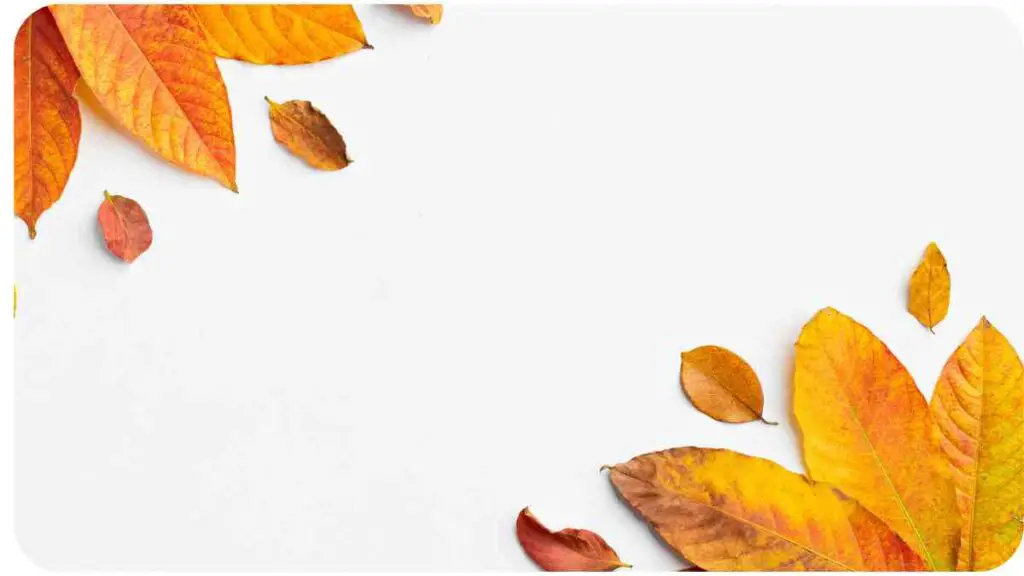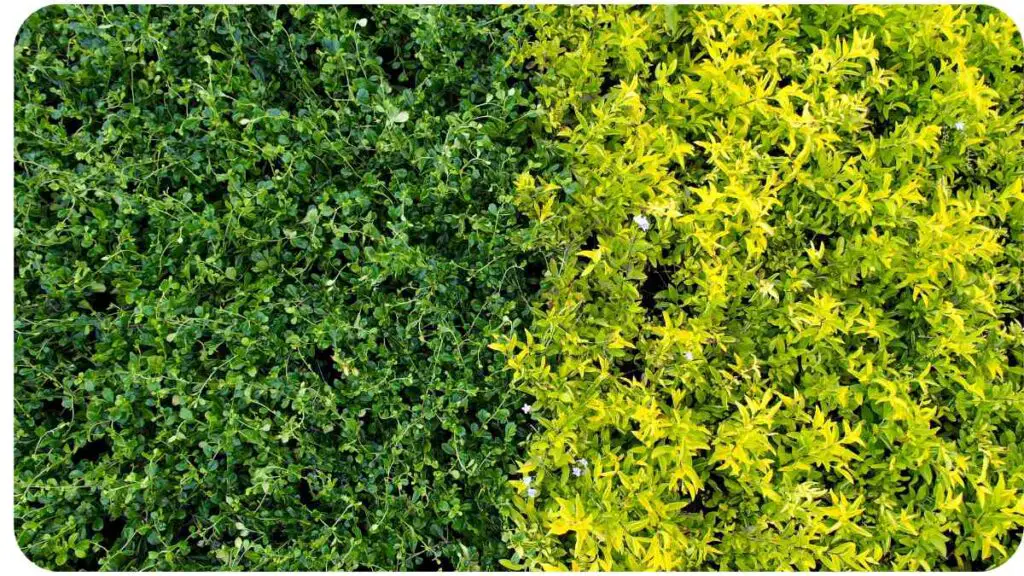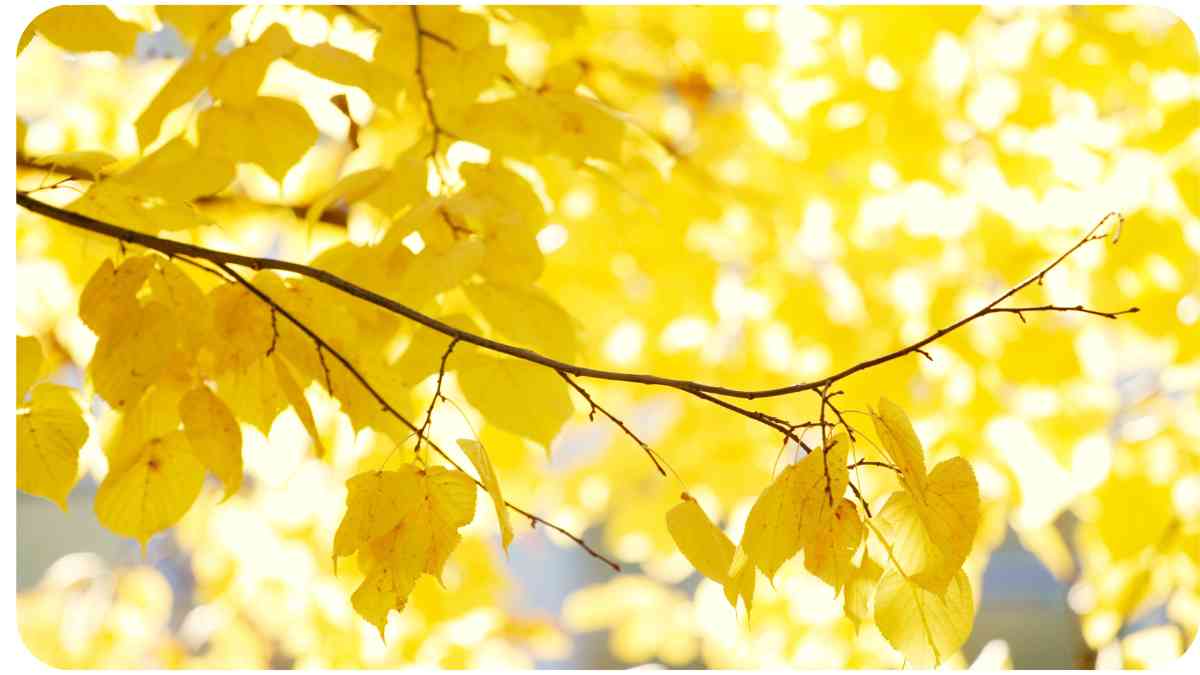Welcome to the world of perennials! These enduring plants grace our gardens with their presence year after year, but sometimes, they throw us a curveball by developing yellowing leaves.
If you’re scratching your head, wondering why your perennials are losing their luster, you’ve come to the right place. In this article, we’ll unravel the mystery of yellowing leaves in perennials, drawing from my years of expertise in horticulture and gardening.
| Takeaways |
|---|
| 1. Nutrient deficiencies, watering issues, pests, and diseases can cause yellowing leaves in perennials. |
| 2. Proper diagnosis is essential, considering leaf symptoms, soil testing, and pest inspection. |
| 3. Solutions include balanced fertilization, precise watering, and effective pest management. |
| 4. Prevent yellowing by preparing soil, selecting suitable perennials, and following maintenance tips. |
| 5. Expert advice includes seasonal timing, compost use, pest monitoring, and understanding microclimates. |
| 6. Real-life experiences highlight the importance of problem-solving and efficient watering. |
| 7. Debunk common myths about yellow leaves and explore integrated pest management. |
| 8. Additional resources and books for further reading are available to deepen your knowledge. |
| 9. Always stay curious and keep learning to maintain a lush perennial garden. |
Understanding the Perennial Garden
Before we dive into the root causes of yellowing leaves, let’s take a moment to appreciate the beauty and resilience of perennial gardens.
These evergreen (pun intended!) spaces bring joy to garden enthusiasts, offering a rich tapestry of colors and textures. From vibrant peonies to graceful hostas, perennials are the backbone of many stunning landscapes.
Enhance your garden’s health and sustainability with expert sustainable landscaping practices. Discover eco-friendly tips to transform your outdoor space into a green haven.
Why Do Perennials Develop Yellow Leaves?

Nutrient Deficiencies
One of the most common reasons for yellowing leaves in perennials is nutrient deficiencies. Perennials require a balanced diet of essential nutrients to thrive. When they’re deprived of these nutrients, their leaves start to turn yellow. To better understand this, let’s take a look at a table that outlines key nutrients and their roles:
| Nutrient | Role in Plant Health |
| Nitrogen (N) | Essential for leaf growth |
| Phosphorus (P) | Promotes root development |
| Potassium (K) | Enhances overall vigor |
| Iron (Fe) | Aids in chlorophyll production |
| Magnesium (Mg) | Supports photosynthesis |
Watering Issues
Water is life for your perennials, but too much or too little can lead to problems. Inconsistent watering can cause stress, resulting in yellowing leaves. Here’s a quick reference table for watering guidelines:
| Plant Variety | Watering Needs |
| Drought-tolerant | Infrequent, deep watering |
| Moisture-loving | Consistent moisture levels |
| Succulents | Minimal, occasional watering |
In my experience, I’ve found that many gardeners struggle to strike the right balance. It’s crucial to adapt your watering schedule based on your specific perennial varieties.
Busy homeowners can embrace eco-friendly living with these 15 simple sustainable landscaping steps. Create an environmentally conscious outdoor space without compromising on aesthetics or convenience.
Pests and Diseases
Perennial gardens can also fall prey to pests and diseases, leading to yellowing leaves. Here’s a table highlighting common pests and diseases in perennials:
| Issue | Symptoms | Treatment |
| Aphids | Sticky residue on leaves, distorted growth | Insecticidal soap |
| Powdery Mildew | White powdery spots on leaves | Fungicide, improve airflow |
| Root Rot | Wilting, yellowing, and weak growth | Improve drainage, fungicide |
| Spider Mites | Fine webbing, stippled leaves | Insecticidal soap |
Diagnosing the Problem
Observing Leaf Symptoms
When your perennials develop yellow leaves, it’s like their way of sending a distress signal. The symptoms can provide valuable clues. Let’s take a look at a table that matches symptoms to potential causes:
| Symptom | Possible Cause |
| Yellowing between veins | Nitrogen deficiency |
| Brown spots or lesions | Fungal infection |
| Curling or wilting | Water stress or root issues |
| Tiny webs or stippling | Spider mites |
Solutions for Yellowing Perennial Leaves

Fertilization Techniques
When faced with nutrient deficiencies, fertilization is the answer. Here’s a table comparing different fertilizer types:
Uncover the hidden advantages of incorporating native landscaping plants into your outdoor space. From biodiversity support to water conservation, discover the benefits of going native.
| Fertilizer Type | Nutrient Content | Application Frequency |
| Slow-release | Balanced NPK | Once or twice a year |
| Liquid | Quick absorption | Every 2-4 weeks |
| Organic | Natural sources | Seasonally |
Proper Watering Practices
Watering is an art, and getting it right is essential. Here’s a table summarizing watering best practices:
| Practice | When to Water | Amount of Water |
| Early morning watering | Allows foliage to dry | Adequate for soil saturation |
| Avoiding overhead | Prevents fungal issues | Deep enough for root reach |
| Mulching | Retains soil moisture | Conserves water |
Pest and Disease Management
Controlling pests and diseases is vital to preserving the health of your perennials. Here’s a table outlining management options:
| Management Method | Effectiveness | Environmental Impact |
| Biological control | High | Low |
| Chemical pesticides | Moderate | Moderate |
| Cultural practices | Moderate | Low |
Preventing Yellowing Leaves in Perennials
Soil Preparation
Healthy soil lays the foundation for thriving perennials. Here’s a table summarizing soil preparation techniques:
| Technique | Benefits | Frequency |
| Soil testing | Identifies deficiencies | Annually |
| Organic matter | Improves soil structure | Seasonally |
| pH adjustment | Optimizes nutrient uptake | As needed |
Plant Selection
Choosing the right perennials for your garden can prevent future problems. Here’s a table of perennial varieties suited for different conditions:
Elevate your outdoor oasis with expert advice and inspiring ideas. Transform your garden into a captivating retreat with creative design tips and horticultural insights.
| Garden Condition | Recommended Perennials |
| Shade | Hostas, Ferns, Bleeding Heart |
| Full Sun | Lavender, Daylilies, Black-Eyed Susan |
| Wet Soil | Irises, Joe-Pye Weed, Lobelia |
Maintenance Tips
Expert Tips for Perennial Care
Now that we’ve covered the fundamentals, let’s dive into some expert tips to ensure your perennials stay vibrant:
Regular Pruning: Prune dead or yellowing leaves to encourage new growth.
Mulch Matters: Apply mulch to maintain soil moisture and deter weeds.
Companion Planting: Plant perennials with natural pest-repellent properties alongside vulnerable ones.
Fertilize Wisely: Follow recommended fertilization schedules and quantities for each perennial type.
Real-Life Experiences: Dealing with Yellowing Leaves
Case Study 1: The Mysterious Case of the Rusty Perennials
In my early gardening days, I encountered a bed of perennials with mysterious rusty leaves. After careful observation and soil testing, I discovered a hidden iron deficiency. By choosing the right fertilizer and addressing the problem promptly, I nursed my perennials back to health.
Case Study 2: A Gardener’s Journey to Green Leaves
My neighbor faced persistent yellowing in her perennial garden. Through collaborative efforts, we identified watering inconsistencies as the main culprit. Adjusting her watering schedule and investing in efficient watering tools transformed her garden into a sea of lush greenery.
Common Myths and Misconceptions
Before we conclude, let’s debunk some common myths:
- Myth: All yellow leaves indicate a nutrient deficiency.
- Reality: Yellowing can result from various factors, including pests and watering issues.
- Myth: Over-fertilizing is always better.
- Reality: Over-fertilizing can harm plants and lead to nutrient imbalances.
- Myth: Perennials require minimal maintenance.
- Reality: Proper care ensures healthy and vibrant perennials.
Dive into the world of water features with guidance on choosing the perfect water feature. Discover how to add tranquility and beauty to your outdoor space with the right water element.
Expert Tips for Perennial Care
Seasonal Timing: Understand the seasonal needs of your perennials. Some benefit from spring pruning, while others thrive when pruned in the fall.
Compost Magic: Utilize compost as a natural and nutrient-rich fertilizer. It enhances soil health and provides a slow-release source of nutrients.
Pest Monitoring: Regularly inspect your plants for signs of pests. Early detection can prevent infestations from spreading.
Microclimates: Be aware of microclimates in your garden. Different areas may have varying sunlight and moisture levels, impacting plant health.
Case Study 3: The Battle with Persistent Aphids
Last summer, I faced a relentless aphid infestation in my rose garden. The leaves turned yellow, and the aphids seemed invincible. Through a combination of organic insecticidal soap and beneficial insects like ladybugs, I managed to restore my roses to their former glory.
Case Study 4: Mastering the Art of Watering
A fellow gardener shared their journey in mastering the art of watering. They had initially struggled with overwatering, leading to yellowing leaves. By adopting a drip irrigation system and understanding their plants’ specific needs, they achieved lush, green perennials.
Common Myths and Misconceptions
Myth: Yellow leaves are always a cause for panic.
- Reality: While it’s essential to address the issue, occasional yellowing can be normal, especially during seasonal changes.
- Myth: All pests are harmful to perennials.
- Reality: Some insects, like pollinators, are beneficial to your garden and should be protected.
- Myth: Chemical pesticides are the only solution for pest control.
- Reality: Integrated pest management (IPM) approaches, including biological controls and cultural practices, can be highly effective and environmentally friendly.
Conclusion
As we continue our exploration of perineal care, you’re on the path to becoming a knowledgeable and successful gardener. The journey of nurturing perennials, understanding their unique needs, and solving the mystery of yellowing leaves is both rewarding and fulfilling. Stay curious, keep learning, and watch your garden flourish.
Further Reading
Here are some additional online resources to explore for more in-depth information on addressing yellowing leaves in plants:
- House Beautiful – Why Are Your Plant Leaves Turning Yellow?
- Discover common reasons behind yellowing leaves and practical solutions for maintaining healthy plants.
- Real Simple – Why Your Plant Leaves Are Turning Yellow (And How You Can Fix It)
- Find expert advice on diagnosing and remedying yellowing leaves in your plants.
- Tumbleweed Plants – Solve the Mystery of Yellow Leaves on Your Indoor Plants: Tips to Restore Vibrant Greenery
- Explore indoor plant-specific guidance for tackling yellowing leaves and reviving your indoor green oasis.
FAQs
What causes yellow leaves on plants?
Yellow leaves in plants can result from various factors, including nutrient deficiencies, overwatering, pests, diseases, or environmental stress.
How can I determine the cause of yellowing leaves in my plants?
To identify the cause, closely examine the leaves, check your watering habits, inspect for pests, and consider environmental factors like sunlight and temperature.
What should I do if my plant’s leaves turn yellow?
Depending on the cause, you may need to adjust your watering schedule, provide appropriate nutrients, treat pests or diseases, or improve environmental conditions.
Is it normal for some plant leaves to turn yellow during seasonal changes?
Yes, it’s normal for certain plants to shed older leaves or exhibit yellowing during seasonal transitions. This is typically not a cause for concern.
How can I prevent yellow leaves from occurring in my plants?
To prevent yellowing leaves, maintain proper care practices such as regular watering, appropriate fertilization, and monitoring for pests and diseases. Adjust care based on plant variety and environmental conditions.

Hi! My name is Hellen James, and I’m a landscape designer in Los Angeles. I’ve been working with homeowners and businesses to help them improve the look of their properties for over 10 years.


